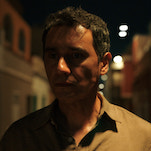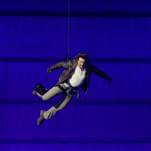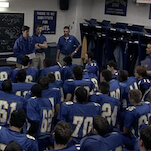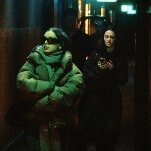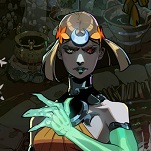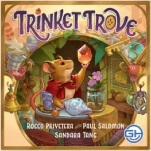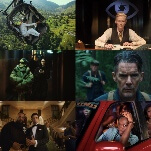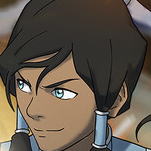Horror movies, like video games, need rules. They don’t need to be fair. They don’t even need to be perfectly clear. But if they’re not consistent, it’s hard for audiences engaging with these often structure-dependent artforms to feel anything but jerked around. The game Until Dawn, co-written by indie horror staple Larry Fessenden, derives much of its satisfaction from its tight design as a choice-driven campfire story, where the branching paths and the player’s own (in)ability to keep all its characters alive incentivize multiple playthroughs. One wants to start again and see if they can get it right this time—or at least screw things up differently. In lieu of going full Bandersnatch or All My Circuits: The Movie, the film Until Dawn opts to translate those themes of repetition (and that desire to save everyone) into a misbegotten time loop tale, where the story shifts at will to cram in as many clichés as possible.
Director David F. Sandberg (who returns to horror after a stint with Shazam!) and co-writers Gary Dauberman and Blair Butler choose their own adventure when it comes to Until Dawn, running their cast through different batches of horror tropes in hopes that something sticks. The resulting hodgepodge of dusty witches, unseen demons, toothy ghost girls, clown-masked slashers, and watered-down wendigos slides off the brain—a generic arsenal of Halloween decorations fired at a set of stock characters. And, without self-awareness or humor, Until Dawn comes off as an especially clueless mark for mockery. What Walk Hard did to bad musician biopics, The Cabin In The Woods does to this film.
Clover (Ella Rubin), looking for her missing sister a year after the fact by tracking her final movements over social media, has gone on the world’s saddest road trip with her tight group of archetypal horror teen pals. Along for the ride are her wimpy, simpy ex Max (Michael Cimino); the bickering alt-girl/jock couple of Nina (Odessa A’zion) and Abel (Belmont Cameli); and the woo-woo would-be mystic Megan (Ji-young Yoo). The sleepily bantering group contains fewer interpersonal dynamics than the game’s crew, which at least throws a few messy relationships into the ever-grinding horror gears. Their final stop? A gas station out in the boonies, staffed by a grizzly Peter Stormare (sorta kinda reprising his role from the game). Megan claims that something doesn’t feel right. Imagine that.
Stormare’s growling creep directs them through the woods, where a torrential downpour drives them to an unaffected, seemingly abandoned welcome center. There they discover a weird mounted hourglass, a guestbook signed over and over by the same people, and a missing poster featuring Clover’s sister. Nina has already signed the log by the time they put two and two together, and the bodies start piling up. But when they’re all finally snuffed out, in ways both juicily gruesome and nonchalant, they wake up, now back to when they first arrived at the welcome center.
Only, the night unfolds differently each time, which means they can’t just learn how to avoid all the things trying to murder them. Occasionally, the world outside the welcome center changes too. Sometimes there are new dilapidated buildings. Sometimes a whole haunted carnival is in town. It’s an aesthetic landfill, shoehorning Easter-egg props and cherrypicked subject matter from the game into a series of disconnected horror shorts. Psychiatric hospitals and mining disasters are half-heartedly referenced, but it’s not like these details amount to anything. No vengeful miner is running around a la My Bloody Valentine. The ensemble is basically walking through the aisles of a cheap Halloween store, being chased by whoever’s on clearance that day.
Unlike some of its time loop peers, Until Dawn does offer various explanations for why this is happening as the truly useless teens are cyclically stabbed, bifurcated, exploded, and gassed. But, like the threats facing the group, the reasoning seems to change at random. Are they trapped there by that magic hourglass, which keeps flipping over as their days reset? Or maybe by the mysterious powers of Stormare’s character, who mutters his way through the film? Is it a cursed location? Or has the place been poisoned with that shorthand bane of modern horror, trauma?
Those live-die-repeating through it don’t seem especially interested in the shifting answers. That could simply be a nihilistic response to a film playing Calvinball with their lives, where the only consistent ideas seem to be that one, they’ll be free if they survive the night, and two, they shouldn’t drink the water. But it’s also fitting for a film where apathy clouds the atmosphere. As is quickly established, their deaths are meaningless and, seemingly, limitless. Gnarly kills and jolty surprises immediately lose their impact, because the characters aren’t trying to do anything—even survive—that getting killed gets in the way of. For much of the runtime, they’re so disinterested in figuring out what’s happening that they’ll enter into murder-suicide pacts the second something goes awry instead of living as long as possible in search of clues. They, like those in the audience, are simply whiling away the confounding tedium until the movie comes to an end.
The terrible script so often steals the spotlight that the gory, by-the-numbers filmmaking putting it into action is almost besides the point. Sandberg, for his part, can stage an effective horror sequence. A few found-footage moments discovered sitting in one of the victims’ camera reels provide a gasp of much-needed energy. Sandberg also understands light and negative space, setting up visual gimmicks (like a blinking traffic light, for some reason on the floor of a psychiatric hospital, that establishes a predictable rhythm for when one can or cannot see a pursuing monster) that knowingly prepare viewers for the jumpscares to come. But that’s really all Until Dawn has: repetitive jumpscares, and narrative chaos.
Horror, whether in games or in movies, is about setups and payoffs. Until Dawn is a film almost exclusively of setups, with the payoffs either mismatched or permanently deferred. In its indecision around what kind of film it wanted to turn a decision-driven game into, firing its shotgun approach haphazardly into the air, it incoherently spins itself in circles.
Director: David F. Sandberg
Writer: Gary Dauberman, Blair Butler
Starring: Ella Rubin, Michael Cimino, Odessa A’zion, Ji-young Yoo, Belmont Cameli, Peter Stormare
Release Date: April 25, 2025
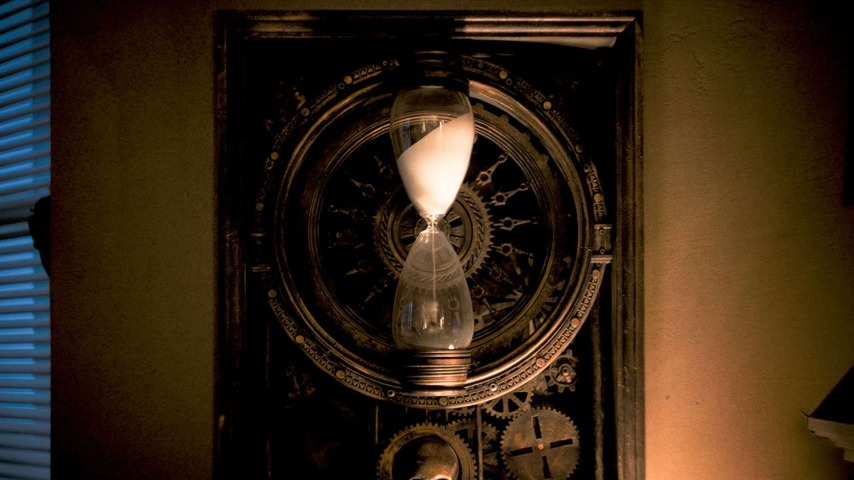




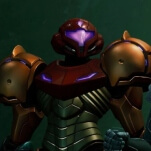
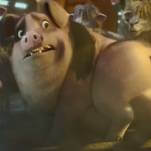


![HBO teases new Euphoria, Larry David, and much more in 2026 sizzle reel [Updated]](https://img.pastemagazine.com/wp-content/avuploads/2025/12/12100344/MixCollage-12-Dec-2025-09-56-AM-9137.jpg)


